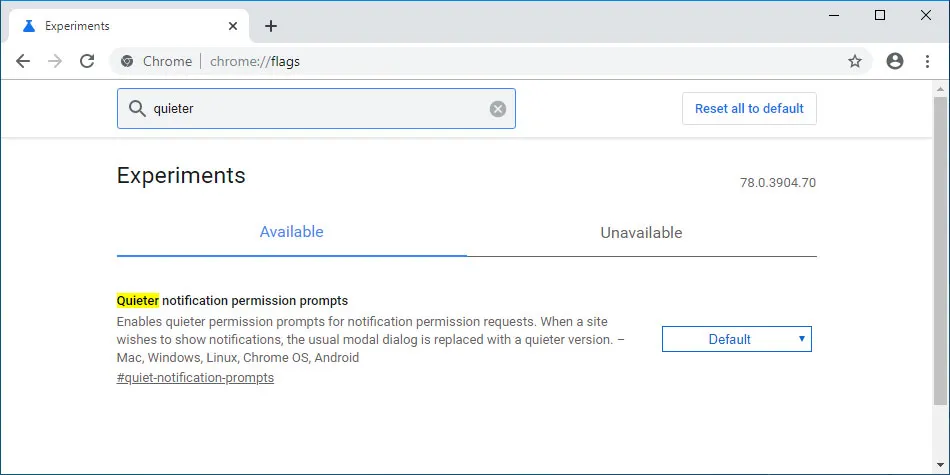How to Stop Google Chrome Notifications: Simple Steps for All Devices

Key Takeaways
- Chrome Notifications Can Be Risky: While some alerts are helpful, others can be annoying or even dangerous—like fake virus warnings or phishing scams.
- Turn Off Notifications in Chrome Settings: You can block all or specific site notifications through Chrome’s “Site Settings” on any device.
- Stop Pop-ups and Autoplay Videos: Disabling third-party cookies, pop-ups, and auto-playing videos can reduce distractions and improve security.
- Use System Settings Too: On Windows, Mac, Android, and iOS, you can manage or block Chrome notifications directly from your device’s system settings.
- Still Getting Notifications? Check for suspicious extensions, reset Chrome, and use tools like Guardio to block hidden threats and spammy alerts.
Google Chrome is one of the most popular web browsers, but its notifications can sometimes become overwhelming. While some notifications are simply annoying interruptions to your browsing experience, others can pose genuine security risks. Even seemingly useful updates from your favorite websites can vary greatly. Some provide valuable information while others might be gateways to scams.
Before disabling notifications, it's important to understand their types and risks. Chrome notifications can be helpful (email alerts, news updates), annoying (marketing pop-ups), or harmful (phishing scams, fake virus alerts, and deceptive ads).
Many websites trick users into clicking “Allow” using fake CAPTCHA tests, misleading download buttons, and scare tactics like “Your device is infected!” These can lead to spam, phishing attempts, and malware infections. This guide will help you disable unwanted notifications and enhance security.
{{component-cta-custom}}
How to Stop Google Chrome Notifications
Unwanted Chrome notifications can disrupt your workflow and clutter your browsing experience. Here’s how to take control and minimize distractions:
Disabling Site Notifications in Chrome Settings
To completely block notifications, adjust your Chrome settings to stop websites from sending alerts.
1. Open Google Chrome and click the three vertical dots in the top-right corner.

2. Go to Settings > Privacy and Security > Site Settings

3. Under Permissions click Notifications.

4. Toggle off the option to "Don’t allow sites to send notifications".

This will block all push notifications from websites.
Managing Notifications for Specific Sites
If you want to allow notifications from specific sites while blocking others:
1. Follow the steps above to access Notifications under Site Settings.
2. Under Customized behaviors, add the URLs of sites you want to allow or block.

3. Add each site to either Allow or Block.
Blocking Unwanted Cookie Pop-Ups
Reducing cookie-related pop-ups can make web browsing smoother and less intrusive.
1. Go to Settings > Privacy and Security > Third Party Cookies.

2. Enable Block third-party cookies to reduce cookie-related pop-ups.

Stopping Ads and Intrusive Pop-Ups
Ads and pop-ups can sometimes sneak in as notifications, but blocking them keeps your browsing clean and hassle-free.
1. Go to Settings > Privacy and Security > Site Settings > Pop-ups and redirects.

2. Ensure the option to "Don’t allow sites to send pop-ups or use redirects" is enabled.

Disabling Auto-Playing Videos
Videos that start playing on their own can be just as distracting as notifications. Turning them off gives you more control over your browsing experience.
1. Navigate to Settings > Privacy and Security > Site Settings > Media.
2. Under Autoplay, select "Don’t allow sites to autoplay media with sound".
How to Stop Google Chrome Notifications on Different Devices
The steps to disable notifications vary depending on your device and operating system.
Windows 10 and 11
On Windows, Chrome notifications can be disabled both in the browser and system settings.
1. Open Chrome and go to Settings > Privacy and Security > Site Settings > Notifications.
2. Toggle off notifications.
3. Additionally, go to Windows Settings > System > Notifications and disable Chrome notifications.

How to Stop Google Chrome Notifications on Mac
1. Open Chrome and access Settings > Privacy and Security > Site Settings > Notifications.
2. Disable notifications.
3. For system-level control, go to System Preferences > Notifications and adjust settings.

How to Stop Google Chrome Notifications on Android
1. Open the Chrome app and tap the three dots in the top-right corner.
2. Go to Settings > Site Settings > Notifications.

3. Toggle off "Show notifications".
4. You can also disable notifications from Application Settings.

How to Stop Google Chrome Notifications on iOS
1. Open Notifications Settings on your iPhone or iPad.

2. Scroll down and tap Chrome, and disable the notification.

How to Stop Google Chrome Notifications from Extensions and Third-Party Apps
Some Chrome extensions and apps may send notifications even if site notifications are disabled.
Managing Chrome Extensions that Send Notifications
Review your installed Chrome extensions and disable those that send unwanted notifications.
1. Open Chrome and go to Settings > Extensions.
2. Disable or remove extensions that send unwanted notifications.

What to Do If You Still Get Unwanted Chrome Notifications
If notifications persist despite making changes, try these troubleshooting steps:
Reset Chrome Settings to Default
Resetting Chrome settings can help if unknown settings or malware are causing unwanted notifications.
Go to Settings > Reset settings > Restore settings to their original defaults.

Check for Malware or Suspicious Extensions
If unwanted notifications persist, malware or a rogue extension may be overriding your settings. This is how you can fix it:
- Scan with Guardio or a trusted security tool to detect harmful extensions.
- Manually review extensions at chrome://extensions/ and remove anything suspicious.
- Run a malware scan to clean your system.
Regular scans help block malicious notifications and keep your browser safe.

Update Chrome to the Latest Version
Keeping Chrome updated ensures you have the latest security and notification settings.
Go to Settings > About Chrome to check for updates.

Advanced Chrome Notification Settings for Better Control
For more granular control over Chrome notifications, consider using advanced settings and tools.
Using Chrome Flags for Notification Management
Chrome Flags provide experimental settings for customizing notifications.
1. Type chrome://flags in the address bar.
2. Search for "quieter notification prompts" and enable it.

Scheduling Notification Settings for Work and Personal Use
Managing notifications effectively helps maintain focus and reduce distractions. While Chrome doesn’t have a built-in Focus Mode, you can still schedule notifications using system settings and extensions.
For Windows and macOS users, enabling Do Not Disturb (DND) mode silences Chrome notifications during work hours.
On Windows, go to Settings > System > Focus Assist to schedule quiet hours.

On MacOS, navigate to System Settings > Focus to set up work and personal schedules.

On Android and iOS, you can limit Chrome notifications by using Focus Mode (iOS) or Digital Wellbeing (Android) under system settings. These allow you to mute notifications for specific apps at scheduled times.
If you want in-browser solutions, Chrome extensions like StayFocusd, LeechBlock, or BlockSite let you restrict notifications and site access during work hours while allowing them afterward.
For better control, consider using separate Chrome profiles for work and personal use. This way, you can enable notifications only where needed.
By scheduling notifications properly, you can improve productivity and maintain a balance between work and personal time.
{{component-tips}}
Enhancing Chrome Privacy and Security with Guardio
Guardio is a browser security extension and mobile app designed to protect users from phishing attacks, malicious websites, and intrusive notifications that may compromise privacy. Guardio helps by automatically:
- Blocking Suspicious Notifications: Prevents unwanted alerts from untrustworthy sites and deceptive pop-ups.
- Scanning Harmful Extensions: Detects browser extensions that may bypass Chrome’s security settings and send spam notifications.
- Detecting Phishing Attempts: Identifies phishing sites and malicious downloads in real-time.
For those seeking a safer browsing experience while maintaining control over notifications, Guardio is a valuable tool to enhance privacy and security within Chrome.
Conclusion
Stopping Google Chrome notifications is essential for a distraction-free browsing experience. By following the steps outlined in this guide, you can take control of your browser’s notification settings on any device. For the best privacy and security features, explore Guardio to secure your online activities.
{{component-cta-custom}}








